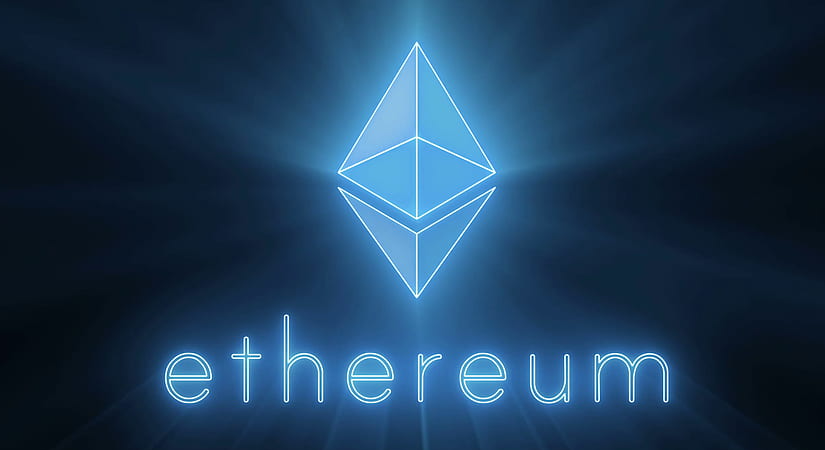Ethereum is one of the most popular cryptocurrencies and has attracted miners from all over the world. While individual miners can still earn rewards by solving cryptographic puzzles, Ethereum mining pools offer a more practical and reliable way to participate in the mining process. With the increasing difficulty of mining, mining pools have become essential for most small and medium-sized miners.

In this guide, we will explore how Ethereum mining pools work and how you can earn from mining Ethereum by joining one.
What Is an Ethereum Mining Pool?
An Ethereum mining pool is a collective of miners who pool their computational resources to solve blocks on the Ethereum blockchain. Mining Ethereum involves solving complex cryptographic puzzles, which requires significant computational power. Solo mining, where individual miners try to solve these puzzles, is increasingly difficult due to the high network difficulty.
In a mining pool, the work is divided among participants, and rewards are distributed based on each miner’s contribution of computing power, or hashrate. This method allows even smaller miners to participate and earn a share of the block rewards more consistently than they would through solo mining.
How Ethereum Mining Pools Work
Mining pools operate by splitting the workload of solving a block into smaller tasks that are distributed among participants. Each miner in the pool works on a small part of the problem, contributing their GPU or ASIC hardware’s hashrate. When a block is solved by the pool, the reward is shared based on each miner’s contribution.
Hashrate and Contribution
In a mining pool, your earnings are determined by the hashrate you contribute. The more powerful your mining hardware, the higher your hashrate, and the more you’ll earn from the pool. Mining pools ensure consistent payouts because they solve blocks more frequently than individual miners can.
Reward Distribution Models
There are several common reward distribution models used by Ethereum mining pools:
- Pay-Per-Share (PPS): In this model, miners receive a fixed payout for every valid share they submit to the pool, regardless of whether the pool successfully mines a block.
- Pay-Per-Last-N-Shares (PPLNS): This model rewards miners based on the number of shares they contributed over the last N shares submitted to the pool. It can result in higher payouts, but the rewards are more variable.
- Full Pay-Per-Share (FPPS): This model offers a more comprehensive reward structure, paying miners not only for block rewards but also for the transaction fees within each block.
Choosing the right reward distribution model depends on your preferences for consistency and potential payout amounts.
How to Earn from Ethereum Mining Pools
To successfully earn from Ethereum mining pools, you need to follow a series of key steps, starting with selecting the right pool and setting up your mining hardware.
1. Choose the Right Mining Pool
The first step in earning from Ethereum mining pools is selecting the right pool to join. Several factors should guide your decision:
- Pool size: Larger pools offer more consistent payouts, as they mine blocks more frequently. However, smaller pools may offer higher payouts on average but less often.
- Fees: Most mining pools charge a fee, typically between 1% and 3%, which is deducted from your earnings. It’s important to choose a pool with a fee structure that aligns with your profitability goals.
- Payout threshold: Some pools require you to reach a minimum payout threshold before you can withdraw your earnings. Make sure this threshold aligns with your expectations.
Popular Ethereum mining pools include Ethermine, SparkPool, and F2Pool. You can compare the different pools and their statistics using tools like WhatToMine and Mining Pool Stats.
2. Set Up Your Mining Hardware
Ethereum mining typically requires high-performance GPU mining rigs. Unlike Bitcoin, which uses ASIC miners, Ethereum can still be mined efficiently using powerful graphics cards. The most popular GPUs for Ethereum mining are from NVIDIA and AMD.
When setting up your hardware, make sure your mining rig is optimized for maximum performance. Proper cooling and overclocking can help maximize your hash rate without damaging your hardware. The higher your hash rate, the more shares you’ll contribute to the pool, and the more rewards you’ll earn.
3. Download and Configure Mining Software
Once your mining hardware is set up, you’ll need to download and configure mining software to connect to your chosen pool. Some popular mining software for Ethereum includes:
- Claymore
- PhoenixMiner
- Geth
You’ll need to configure the mining software with your pool’s server details, including the pool’s address and your wallet credentials. Each mining pool provides detailed setup guides that can help you with this process.
4. Monitor and Optimize Your Mining Activity
After you’ve configured your hardware and software, you can start mining Ethereum in your chosen pool. Monitoring your performance is crucial to ensuring that your setup is working efficiently. Some mining software comes with built-in monitoring tools, but you can also use third-party platforms like HiveOS or Minerstat to track your hash rate, power consumption, and potential earnings.
Regularly optimizing your hardware by updating drivers, adjusting overclocking settings, and maintaining cooling systems can further improve your mining efficiency and profitability.
5. Withdraw Your Earnings
Once you’ve earned enough in the mining pool, you can withdraw your earnings to your Ethereum wallet. Mining pools typically have a minimum payout threshold that you must meet before you can withdraw. This threshold is usually between 0.01 and 1 ETH, depending on the pool.
Ensure that you are using a secure wallet to receive your mining earnings. Popular wallets for Ethereum include MetaMask, Trust Wallet, and Ledger hardware wallets.
FAQs
1. Is Ethereum mining still profitable in 2024?
Yes, Ethereum mining can still be profitable in 2024, but it depends on several factors, including the price of Ethereum, the cost of electricity, and the efficiency of your mining hardware. Using profitability calculators like WhatToMine can help you estimate your potential earnings.
2. What is the best Ethereum mining pool?
The best Ethereum mining pool depends on your location, hardware, and payout preferences. Ethermine, F2Pool, and Hiveon are popular choices among miners for their stability and payout models.
3. How much can I earn from Ethereum mining pools?
Earnings from Ethereum mining pools vary based on the hashrate you contribute, the pool’s size and fee structure, and the current market value of Ethereum. Tools like CryptoCompare’s mining calculator can help estimate your earnings based on your hardware.
4. Can I mine Ethereum without joining a pool?
Technically, you can mine Ethereum without joining a pool (solo mining), but it is increasingly difficult due to the high network difficulty. Solo mining is only recommended for miners with very high hashrate capabilities. Most miners find pool mining to be more profitable and consistent.
5. What are the risks of joining an Ethereum mining pool?
The main risks of joining a mining pool include centralization, where large pools control a significant portion of the network’s hashrate, and security risks associated with trusting the pool operator. Additionally, fees can reduce your overall profitability.
Conclusion
Joining an Ethereum mining pool is a practical way for small and medium-sized miners to earn consistent rewards. With the right pool, mining hardware, and optimized setup, you can start earning from Ethereum mining. By participating in a pool, you benefit from more frequent payouts and a steady income stream.
Start by choosing a reputable mining pool, setting up efficient hardware, and monitoring your performance. Tools like WhatToMine and Minerstat can assist in making informed decisions and optimizing your mining efforts.
